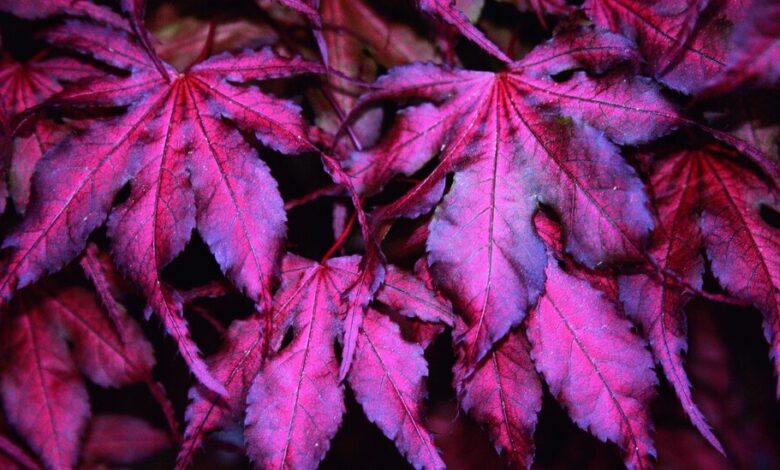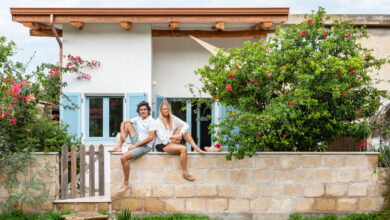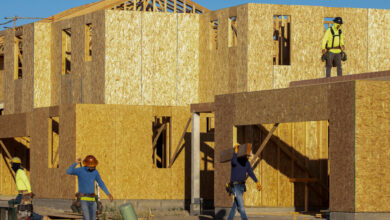Why Japanese Maples Are an Obsession for Gardeners

Matthew and Timothy Nichols’s story could be a case study of what it means to manifest something. The goal they realized: To amass an enviable collection of Japanese maples and establish a leading role in championing them.
In 2008, when the brothers took over their father’s hobby — a Japanese maple project they had helped with, doing tailgate sales at flea markets — they quickly realized how much they needed to learn to turn it into the sort of business they envisioned.
And they knew where they might learn at least some of it.
The brothers, then 21 and 27, planned a pilgrimage to the 2009 Maple Society of North America conference in Oregon, which included a tour of Buchholz & Buchholz Nursery. They hoped to meet the nursery’s owner, Talon Buchholz, who had introduced some of the Japanese maple selections they most admired.
Funding the trip was a bit of a stretch. They were living in their parents’ basement in East Flat Rock, N.C., but they summoned that where-there’s-a-will spirit: Matt Nichols sold his college furniture, Tim Nichols divested himself of his video game collection, and off they went.
Today, tailgate sellers no more, they have a mail-order business, MrMaple, that ships 100 plants a day year round, and more than 700 at peak times.
That Oregon trip helped them establish key connections, including the one with Mr. Buchholz, a mentorship that continues to this day. They began to sharpen needed technical skills, but even more important, they say, was how Mr. Buchholz fueled their passion for the plants and helped them develop a discerning eye for what makes a new variety worthy of introduction.
Something else grew, as well: When Mr. Buchholz was ready to retire last year, it was the Nichols brothers he approached about buying Buchholz & Buchholz. Their acquisition of his business, which wholesales to garden centers, added a new customer base to their already maple-filled lives.
The brothers’ maple collection now hovers around the 1,500 mark. Apparently there is no such thing as having too many Japanese maples, particularly if each variety is distinctive.
Is there room for one, or maybe several, in your garden?
What’s a Japanese Maple Anyhow?
The term Japanese maple can mean a couple of things, said Tim Nichols, the most obvious being any species of Acer native to Japan.
Acer palmatum is the most common, he said. A. shirasawanum (sometimes called the full moon maple), A. japonicum and A. sieboldianum are among the other Japanese species.
Maple collectors and nursery people widen the definition to encompass any species within a closely related taxonomic section of the genus Acer called Section Palmata — including maples from beyond Japan like A. pseudosieboldianum (from Korea and China) and Acer circinatum (from the Pacific Northwest).
Matters of taxonomy aside, to most gardeners the term probably suggests one of two commonly grown versions: an upright, red-leaved tree like Bloodgood or a weeping lace-leaf variety.
But that narrow conception misses so much of the garden-enhancing potential of Japanese maples.
It overlooks the trees’ diversity of scale and habit, and the extravagance of leaf size, shape and texture, in colors that include gold, chartreuse, pinkish-reds, deep wine — as well as the variegated selections, splashed or edged in contrasting shades.
Considering the aesthetic range, one per garden doesn’t feel like nearly enough.
“Maples are like orchids, in that people don’t have just one,” Matt Nichols said. “We create a lot of collectors. People get obsessed, because there’s so much diversity and so many different characteristics to look at, all the nuances.”
There is something for every taste — although not all are well suited to every hardiness zone or exposure in the garden.
Coral-bark maples, for example, like the classic Sango Kaku — a green-leaved variety whose reddish twigs are particularly dramatic in winter — are hardy down to Zone 6, but not 5. Another consideration: In a spot that is too shady, their twig color washes out.
Generally speaking, yellow-leaved cultivars or those with a lot of pink or white in their foliage (like Butterfly or Ukigumo) will appreciate more late-day shade and would burn in afternoon sun, especially in warmer zones.
“Now rules are made to be broken,” said Matt Nichols, citing a Buchholz introduction called Geisha Gone Wild, a bright pink exception that can take the heat even in Zone 8a. Among the yellows, Summer Gold and Hot Blonde can handle Zone 8 full sun.
“We like to break the mold on the traditional zones people think of with Japanese maples,” Tim Nichols said. “Full sun in Zone 9 is something people never think about for them, and Zone 4 is something people never think about. So we’re trying to go both directions, to put Japanese maples in more homes across the United States.”
On the colder end, that hinges on efforts in collaboration with Mr. Buchholz to hybridize new varieties incorporating the genetics of the exceptionally hardy Acer pseudosieboldianum. A. oliverianum, a Chinese species, is helping to provide hybrids that answer the challenges of Zone 9.
Good Drainage and Other Requirements
Certain guidelines apply across the spectrum of these highly ornamental plants.
For instance: “Virtually any Japanese maple can grow in a condition where they get morning sun and afternoon shade,” Tim Nichols said.
Another universal rule: They need good drainage. “They’ve got to have it,” he said.
If you can’t provide a spot in soil that drains well, grow the trees in pots, he suggested. But even in a container, he cautioned, overwatering can occur. These trees like to dry out between waterings, so they will suffer if they’re paired with annuals that need frequent watering.
Planting them too deep should also be avoided. Most Japanese maples sold as garden trees are grafted, and if the graft union near the base of the plant is buried, the plant will struggle. Likewise, smothering them under mounds of mulch — “the dreaded volcano mulch of death,” Tim Nichols said — invites trouble.
His brother put it this way: “The main mistakes people make with Japanese maples are loving them too much.”
Some gardeners in colder zones may think wrapping their trees in burlap for extra winter protection is helpful, but the brothers say no — that can invite problems. (What is recommended in Zone 5 and colder: Give potted trees the protection of an unheated garage in winter.)
Fertilizer isn’t usually needed, Tim Nichols said, but if you do feed your trees, do it in early spring, when they leaf out — and never after late spring. Slow-release fertilizer can backfire because it keeps feeding for up to 180 days, which encourages active growth too late in the season. That can diminish fall color, a coveted feature that virtually all varieties deliver under good conditions. Even worse, it can push tender growth that will be damaged by frost.
And the List Goes On …
While Matt Nichols self-deprecatingly describes their business as “kind of based on being hoarders,” the MrMaple assortment is hardly a group of just any old trees accumulated with the idea that more is better.
One collector favorite is Mikawa Yatsubusa, a dense, green-leaved dwarf with the habit of a bonsai — a look it achieves naturally, without loads of pruning.
“It has this lively creature-like feel, where it seems like an animal out there in the landscape,” Tim Nichols said.
Midsize Fireglow positively screams for attention, and is the brothers’ recommendation for the classic upright red form so many gardeners seek. “With morning sun or afternoon sun,” he said, “the back of the leaf is an orange-red, and it creates a glowing effect.”
Among the ever-popular weeping red lace-leafs, one of the most vivid throughout the season is Orangeola.
“When people think of colorful maples, they think of spring and fall,” Matt Nichols said. “Orangeola is its coolest in June-July, because you’ve got three colors going: greener, older growth; reddish-orange new growth; and then pinkish-red tips.”
Fun fact about lace-leaf Japanese maples: They are generally of a weeping habit. But there are exceptions — cascading varieties whose leaves are not so finely dissected as those of most weepers. They include green-leaved Ryusen and a yellow version called Golden Falls.
Some of the most dramatic varieties are discoveries Mr. Buchholz made, including Purple Ghost, which has purple-red leaves marked in a showy network of black veining, or reticulation.
“Put that next to something like Summer Gold, and the contrast is off the charts,” Matt Nichols said.
They could go on — and do, most notably on Tuesday mornings at 10 a.m., on their MrMaple Show on YouTube, where they evangelize about 10 varieties. Some weeks they include choice conifers, another passion, as part of the mix.
“We’ve got a lot of tree geeks that watch this channel,” Matt Nichols said to his brother during a recent episode.
Perhaps this is one of those “takes one to know one” moments?
Margaret Roach is the creator of the website and podcast A Way to Garden, and a book of the same name.
If you have a gardening question, email it to Margaret Roach at gardenqanda@nytimes.com, and she may address it in a future column.
Source link






